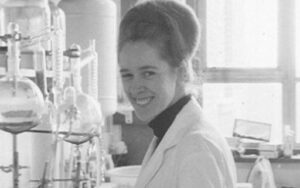Limiting Multiple Births in IVF
How Do You Decide How Many Embryos to Transfer?
One of the advantages of IVF treatment is that you and your fertility specialist have the ability to limit your chances of having a multiple pregnancy by making the decision of how many embryos to transfer. Multiple pregnancies include twins, or are called high order multiples when there are more than twins. Some other fertility treatments like intrauterine insemination (IUI) with gonadotropins, injectable fertility drugs which stimulate egg production, are more likely to cause high-order multiples, which increase the risk of health problems to both the mother and the babies.

However, one of the reasons why single-embryo transfer in IVF is not common yet is that it may be less likely to result in a live birth than transfer of two or three embryos. Not every embryo that is transferred will implant and grow. The goal of fertility treatment is to have one healthy baby, called a singleton, as you normally would through natural reproduction. How do you decide how many embryos to transfer? It’s a matter of balancing risk and reward.
Recent Guidelines from ASRM and SART
In 2012 new guidelines for embryo transfer were published by the Practice Committee of the American Society for Reproductive Medicine (ASRM) and the Society for Assisted Reproductive Technology (SART), based on analysis of data from thousands of IVF cycles in the U.S. The recommendations allow your reproductive endocrinologist to tailor a treatment plan to your unique medical history and needs. The guidelines depend on your fertility doctor’s assessment of your prognosis and your age, and the stage of development of the embryos.What does “prognosis” mean? It means your doctor will look at your medical history, including your previous history of fertility problems and treatment, and project how you may respond to IVF treatment. Some of the factors ASRM and SART have identified as favorable, independent of your age, are:
- First cycle of IVF
- Good-quality embryos as judged by examination in the lab
- Excess (extra) embryos of good enough quality that it makes sense to freeze them (cryopreservation)
- Patient has been successful with IVF before
The most important factor in the deciding on a recommendation for embryo transfer is the patient’s age. Generally speaking, when you are over age 35 it becomes harder to get pregnant even with IVF, so transfer of more embryos is recommended than for someone under age 35 who has a good prognosis. Both prognosis and age are factors to consider in deciding how many to transfer.The embryos’ stage of development are the third factor to consider, and here’s where things get technical. Embryos that have been fertilized for about two or three days are called “cleavage-stage.” Embryos that are five or six days from fertilization and have divided many more times into many more cells are called blastocysts. In very general terms, fewer blastocysts need to be transferred because they have already grown a little more. However, the difference in recommended number of embryos to transfer is not large.
ASRM guidelines recommend:- For patients under 35 with a favorable prognosis, one to two embryos should be transferred
- All other patients under 35 should have no more than two embryos transferred
- For patients 35-37 with a favorable prognosis, two embryos should be transferred
- All other patients 35-37 should have two embryos transferred if they are blastocysts or three if they are cleavage-stage
- Patients age 38-40 with a favorable prognosis should have no more than two blastocysts or three cleavage-stage embryos transferred
- All other patients 38-40 should have no more than three blastocysts or four cleavage-stage embryos transferred
- At age 41-42 no more than three blastocysts or five cleavage-stage embryos should be transferred
So, How Many Embryos Should You Transfer?
The final factors in all this decision-making are your own personal medical history and your doctor’s experience, the fertility center’s lab, the fertility clinic’s success rate, and what you and your partner feel comfortable with. But the ASRM guidelines are helpful, especially for women under age 38. The idea is to limit your chance of having a high-order multiple pregnancy like triplets or more without hindering your chance of having a healthy single baby.
 However, one of the reasons why single-embryo transfer in IVF is not common yet is that it may be less likely to result in a live birth than transfer of two or three embryos. Not every embryo that is transferred will implant and grow. The goal of fertility treatment is to have one healthy baby, called a singleton, as you normally would through natural reproduction. How do you decide how many embryos to transfer? It’s a matter of balancing risk and reward.
However, one of the reasons why single-embryo transfer in IVF is not common yet is that it may be less likely to result in a live birth than transfer of two or three embryos. Not every embryo that is transferred will implant and grow. The goal of fertility treatment is to have one healthy baby, called a singleton, as you normally would through natural reproduction. How do you decide how many embryos to transfer? It’s a matter of balancing risk and reward.


